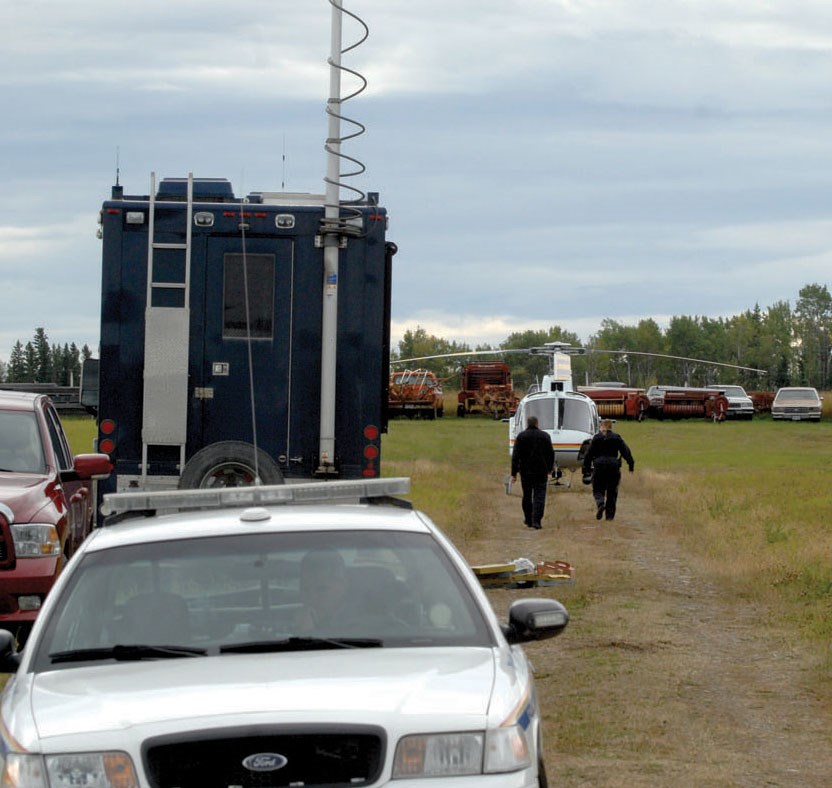Real life police standoffs are rarely as exciting as those portrayed on television, according to a former hostage negotiator turned academic.
Rick Parent, a criminology professor at Simon Fraser University's Police Studies Section, said standoffs involving emergency response teams (ERT) usually drag on for hours and most are resolved successfully after the suspect gets tired.
"Typically these incidents are long and boring, they're protracted," Parent said. "The reason for that is the individual is typically drunk or on drugs or the individual is high on emotions. So by drawing (the process) out they tend to fall asleep or calm down."
Parent spent more than five years as a negotiator with the Municipal Integrated Emergency Response Team in the Lower Mainland before embarking on a career in research. He has studied 409 incidents where ERTs were deployed between 1980 and 2000 and found that 88 per cent of the time the situations were resolved without a shot being fired by authorities.
"It's rare that when one of these teams are deployed, they that actually wind up killing someone," he said. "It's mostly success stories."
According to the RCMP's website, to apply for an ERT position, officers need to have at least two years of experience in policing, received a high score in their recent Police Pistol Combat qualification and be in good physical condition. Before they begin the ERT course, candidate officers are given weapons training as well as physical and psychological testing.
ERTs deal with any number of specialized situations, ranging from high-risk arrests to witness protection detail. They're also deployed when a person barricades themselves in a location, with or without a hostage.
The RCMP declined to speak about standard practice in dealing with standoffs due to an ongoing investigation by the provincial Independent Investigations Office (IIO) as a result of the death of Greg Matters in Pineview on Monday.
Parent explained that there are three types of barricaded individuals that police tend to encounter: mad, sad or sick. Mad individuals can be angry at someone specifically or society in general. Sad individuals are usually depressed and may want to kill themselves or others. Sick suspects generally have a mental illness or are delusional in some way.
Once the type of suspect is identified, police have different tactics at their disposal. Parent said negotiation is important, but also what type of show of force police use. In some cases he said it's beneficial for police to look strong, with helicopters buzzing overhead and police dogs on the ground, in order to spur on the negotiations. Other times they use a more covert look so as not to spook the barricaded person.
If negotiations fail, then Parent said police may use some type of dynamic entry to enter the premises and arrest the suspect.
The decision on how to proceed in any given situation is up to the incident commanders. They're based at the command post, often with or near the negotiators. The tactical officers on the ERT set up a perimeter and prepare to act, if called upon by the incident commanders.
After the situation is resolved - whether successfully or not - a series of debriefings occur. In the case where the suspect is killed, a formal investigation occurs.
Parent said investigators, like the IIO currently on scene in Prince George, try to determine what happened and probe the actions by both the incident commanders and the individual officers. He said sometimes officers are forced to act quickly without formal authorization, if a hostage is in imminent danger.
"Sometimes officers will see something, like the suspect has a gun to victim's head and he can see him pulling the trigger or he's about to stab the victim. That officer isn't going to say, 'can I have permission to do something?' " Parent explained. "If he or she has been given the green light, they're allowed to use deadly force to shoot and kill that person to save the life of the hostage."
The formal investigations tend to drag on, often for months, because ERT officers tend to rely on due process and get their lawyers involved in the process.
"They want to have equal footing with what a prisoner or a criminal would get," Parent said. "They might ask for a lawyer or they might be hesitant to give a full statement."



.png;w=120;h=80;mode=crop)